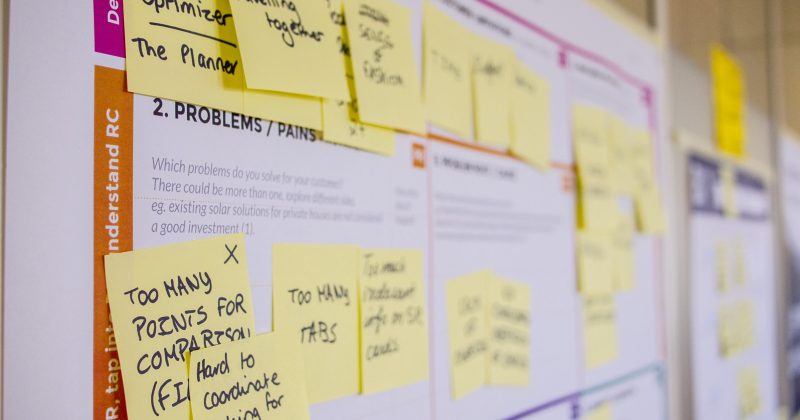The following is being drafted as an official DSIA definition:
A UI (user interface) design architect [1] is a seasoned facilitator of user experience planning, UX design, and the operational lead in creating application user interfaces. They are relied upon to help rationalize user engagement phases and expertly promote scope alignment and design approach in preparation for the architecture, design, and engineering activities of application user interfaces.
The design architect is a champion for human-digital engagement. They have the responsibility to establish a sustainable and equitable balance between a system’s owner and its users with solid workflow and governance practices. And they must care for and find ways to measure and evaluate the health of their digital experience architectures.

Design architects play a crucial role in design operations (designOps) with an interest in governance and workflow [2]. The design architect’s operational responsibility is to ensure that a comprehensive organizational perspective is considered when exploring design solutions. While a team’s design output is crucial, facilitating a solid engagement model that keeps the owner and the team aligned and efficient is paramount. This is essential for informational environments at scale.
facilitating a solid engagement model that keeps the owner and the team aligned and efficient is paramount.
Who is a likely candidate for the design architect role?
The responsibility as the design architect of a project demands experience and a mild obsession with the mechanics behind complex digital environments for human engagement. For any given assignment, they can lead the scoping exercise to help determine the optimal process. They are process-agnostic but framework driven.
The design architect is a champion of design exploration but recognizes that no single process fits them all. As a result, the design architect is sufficiently versed in many effective approaches and lets the nuanced requirements and constraints of each project guide a team’s approach.
As the design lifecycle proceeds, the design architect ensures that the output of each activity is aligned with the underlying objectives, architecture, and experience constraints. Design architects will likely do this with the aid of project managers as environments scale in number and complexity.
While the design architect is not necessarily responsible for day-to-day design activities, they know where the team needs to land and is thus ultimately accountable for guiding the design team to an optimal solution. That means the design architect may work with many functional leaders and contributors including, but not limited to:
- product owners/managers,
- content strategists,
- information architects,
- design leads,
- UX designers and researchers,
- visual and interaction designers,
- UI designers/developers, and
- technology leads.
In 2015, I introduced a high-level conceptual model to begin articulating the core disciplines associated with the architecture and design of application user interfaces. The model for digital experience architecture is available on this site.

In the enterprise, the design architect role will be filled by seasoned practitioners who are masters at collaboration and have the first-hand experience of a wide variety of team and project engagement scenarios. If you need to groom a design architect or have an immediate need, senior practitioners in either information architecture or UX design will be your logical sources for talent.
- UX Strategists, UX Architects, and Senior UX Designers that possess extensive knowledge in leading teams are ideal prospects for the design architect role. These practitioners focus on users and understand how to balance their empathy for users with pragmatic business objectives. They consult well with information architects and researchers to pitch vision and meaningful engagement and are comfortable with immersing clients and teams in collaborative workshops to generate alignment.
- Information Architects are a natural fit as a design architect because they have the requisite skills for evaluating owner objectives, modeling context, and the constraints that inform design and engineering. Their attention to detail, clarity, and actionable documentation are precursors to their keen ability to collaborate. If they do not have the creative and/or operational prowess to facilitate design visioning, they are highly effective at partnering with design and product leads to ensure solid design execution.
What do you call a design architect in practice?
The design architect term is the name of a role, but it doesn’t have to be the title associated with that role. If you want to be technically accurate, then feel free to use “design architect.” However, calling your design architect a “UX architect” is also acceptable. Whatever you decide, it will help use a title that clearly expresses a relationship between UX designers and information architects.
Please Note: This description of the design architect role is a work in progress. Check back for future updates.
References:
[1] This term was first used in an article I wrote in 2015 called, “A New Architecture for Information Systems.
[2] Malouf, Dave. “Understanding the Role of Design Operations on Your Team” 2018. https://www.invisionapp.com/blog Retrieved April 15, 2018.



Comments are closed